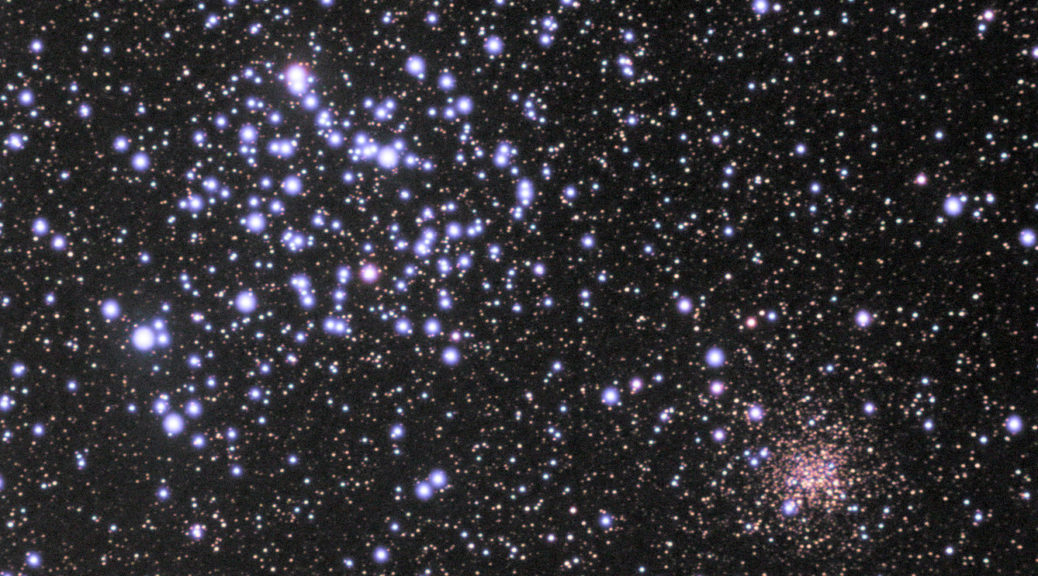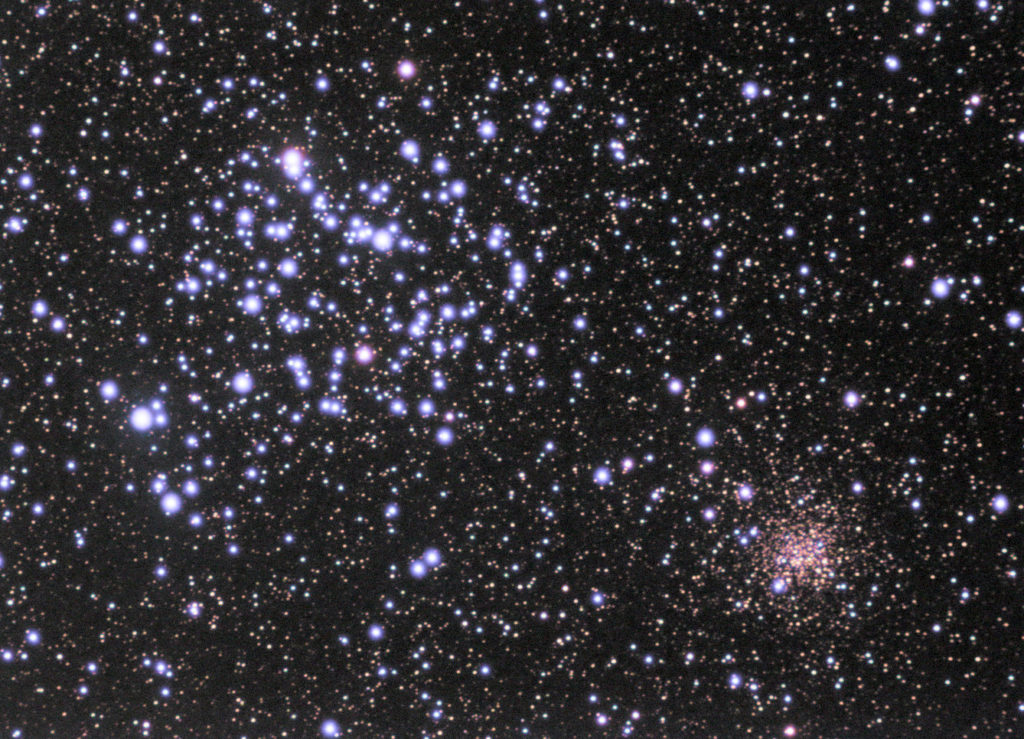
Star Clusters: M35 + NGC 2158
Fifty years ago when I became interested in Astronomy my first telescope was a refractor designed for lunar and planetary work. That first year Mars came closest to Earth. I was amazed to see land features and polar ice caps. Jupiter’s cloud system and four of its brightest moons were easily seen and Saturn was gorgeous.
When I turned my telescope to galaxies I was disappointed. People call them “faint fuzzies” for a reason: they are faint and they do look like fuzzy stars. I wanted to see what professional astronomers see with their large telescopes. I resigned myself to reality and gave up on them with the equipment I had.
One favorite target, besides the planets and the Moon, were star clusters. I dabbled in astrophotography using photographic emulsions like Kodak Tri-X and Spectroscopic 103a-E. Some of my best photographs as a teenager were star clusters.
These days star clusters don’t get the respect they deserve. People do like the famous M13 Hercules Globular Cluster but that is the exception rather than the rule. I decided to try my hand at star clusters again with my new equipment. The great thing about star clusters is that they are bright compared to galaxies and nebulae, and because of that you can tolerate the Moon within reason.
Successfully imaging a star cluster requires a new set of rules. Your audience’s attention is focused on the stars themselves and because of that you want to avoid overexposing them as much as possible. When they reach overexposure they saturate the camera’s pixels and spill over to surrounding pixels. Eventually the surrounding pixels reach saturation and then spill over into more pixels. To me a saturated star looks unpleasantly large and unappealing. Sometimes, though, you can’t avoid some amount of saturation especially when there are many fainter stars that you also want to capture.
The technique I used is described here at my sister site: https://snrcalc.now.sh/help/open-star-clusters

Telescope: William Optics ZenithStar 71mm f/5.9
Camera: Atik 314E CCD (Read Noise 5.3e-, Full Well Depth 13400e-)
Filters: Optolong LRGB
Mount: Unitron Model 152
Tracking: Self-designed R.A. stepper motor with PPEC on Raspberry Pi 3B
Image Acquisition: Astroberry INDI/Ekos on Raspberry Pi 3B+
Remote Guiding Assistance and Polar Alignment: SharpCap 3.1
Image Processing: AstroPixelProcessor (APP) version 1.076
Over three sessions:
L: 540x15s bin1, 2.25 hours
R: 300×14.3s bin2, 1.2 hours
G: 300×8.4s bin2, 0.7 hours
B: 300×13.0s bin2, 1.1 hours
Total Integration time: 5.23 hours
The odd-looking exposure times are due to how I color balance my RGB filters. In many cases this leads to an image that requires no further color adjustments but in this case the image was a tad bit green, so I used APP’s color calibration tool. Why this was necessary was a challenge to solve but now I understand. I designed a spreadsheet to solve the problem. Going forward I will use it as part of my image capture program.